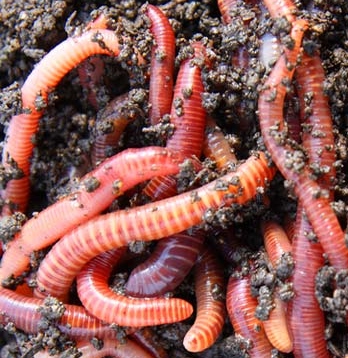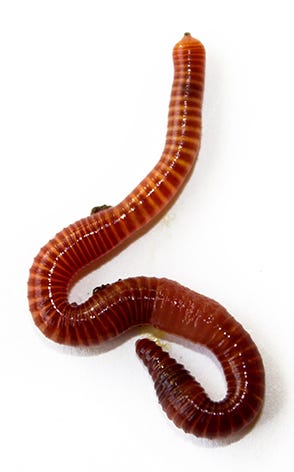Red worms: A guide to care
Top Benefits of Making Use Of Red Wigglers for Vermiculture
The utilization of red wigglers, or Eisenia fetida, in vermiculture presents several engaging advantages that prolong past simple composting. These organisms not only improve soil fertility and structure however additionally help with an extra reliable decay procedure while actively joining waste reduction. Their visibility substantially boosts microbial task within the soil, creating a prospering ecosystem helpful to plant growth. As we check out these benefits further, it comes to be apparent that the implications of integrating red wigglers right into farming methods are both profound and far-reaching.

Enhanced Soil Fertility
Improved soil fertility is a crucial part of lasting farming, and red wigglers play a vital function in this procedure. As a species of earthworm, red wigglers (Eisenia fetida) are particularly efficient in improving dirt health and wellness via their natural habits and biological features. They eat organic waste, damaging it down into nutrient-rich spreadings that substantially enhance dirt framework and nutrient schedule.
The spreadings generated by red wigglers are abundant in important nutrients, including nitrogen, phosphorus, and potassium. These nutrients are readily easily accessible to plants, promoting robust growth and higher yields. In addition, the visibility of red wigglers in the dirt enhances microbial activity, additional adding to vitamins and mineral biking and dirt oygenation. This biological activity cultivates a more resistant dirt community, which can better hold up against ecological anxieties such as dry spell or pest problems.
Integrating red wigglers into agricultural methods not only boosts soil fertility but additionally minimizes the need for artificial fertilizers, aligning with natural farming principles. Using red wigglers in vermiculture stands for a sustainable method to soil administration, inevitably sustaining the lasting practicality of agricultural systems.
Rapid Disintegration Refine
The fast decay procedure facilitated by red wigglers is an exceptional sensation that significantly benefits both composting and dirt wellness. These earthworms, recognized medically as Eisenia fetida, play a crucial function in damaging down raw material successfully. By consuming kitchen scraps, plant debris, and various other natural waste, red wigglers transform these products right into nutrient-rich spreadings at an increased price.
The process starts as the worms consume raw material, where it is then absorbed in their specialized gizzards - red wigglers. This failure not only minimizes the volume of waste however likewise boosts the availability of essential nutrients. As red wigglers eliminate spreadings, they release a byproduct that is bristling with valuable microorganisms, which additionally aids in disintegration and improves the compost
(red wigglers near me)Furthermore, their burrowing activities aerate the compost, promoting optimum microbial task. This dynamic setting accelerates disintegration, bring about a much faster turnover of organic material into useful garden compost. Subsequently, gardeners and farmers can take pleasure in quicker accessibility to premium garden compost, thus improving their ability to support plant development and overall dirt vitality. The efficiency of red wigglers in the decomposition process is hence important for sustainable composting techniques.
Improved Dirt Framework

Furthermore, the castings generated by red wigglers are abundant in advantageous bacteria and nutrients, which promote a healthy soil environment. These castings enhance the soil's wetness retention ability, reducing the need for frequent watering. As the raw material is broken down into better bits, it enhances the soil's aggregate stability, preventing erosion and compaction.
The visibility of red wigglers additionally cultivates a varied microbial area, which plays a vital role in nutrient cycling. This diversity further enhances soil fertility and durability, enabling it to sustain a large range of plant.

Decrease of Waste
Vermiculture making use of red wigglers plays a crucial duty in the decrease of waste, especially natural waste that would or else finish up in landfills. The process of vermicomposting properly transforms numerous types of organic materials, such as food scraps, lawn waste, and paper products, into nutrient-rich vermicast. This not only draws away waste from land fills but also reduces the environmental influence associated with waste decay in these sites, which typically generates harmful greenhouse gases like methane.
By utilizing red wigglers, individuals and organizations can handle their organic waste more sustainably. These worms have an amazing ability to eat considerable quantities of organic product, transforming it into important compost that can be utilized to improve dirt. This process not only decreases the quantity of waste but likewise prolongs the life expectancy of land fills, eventually adding to lose monitoring services.
Furthermore, embracing vermiculture practices motivates a culture of reusing and sustainability. As more individuals acknowledge the advantages of composting with red wigglers, the collective influence on waste decrease becomes significantly considerable. In recap, using red wigglers for vermiculture supplies an effective technique for minimizing organic waste while boosting ecological stewardship.
Enhanced Microbial Task
While taking part in vermicomposting, the presence of red wigglers substantially improves microbial activity within the composting system. These earthworms create a conducive setting for valuable microorganisms by aerating the compost and damaging down organic material. As the worms consume food scraps and other natural waste, they excrete nutrient-rich castings, which act as a habitat and food source for diverse microbial communities.
The raised microbial activity helps with the rapid decay of raw material, resulting in extra effective nutrient biking. This procedure not only accelerates garden compost maturation yet additionally improves the total quality of the final product. Microbes, such as microorganisms and fungis, grow in the worm-rich atmosphere, resulting in a higher concentration of crucial nutrients like nitrogen, phosphorus, and potassium in the compost.
In addition, the synergistic partnership in between red wigglers and microorganisms adds to virus reductions and enhances soil wellness. By promoting a durable informative post microbial population, vermicomposting with red wigglers advertises biodiversity in the garden compost, eventually resulting in richer, healthier soil for plant development. Thus, the function of red wigglers in raising microbial activity is crucial for effective and sustainable vermiculture practices.
Conclusion
In recap, the usage of red wigglers in vermiculture provides many benefits, consisting of improved soil fertility, efficient decomposition of raw material, and boosted soil framework. Their unique burrowing behavior not just promotes much better water retention but also aids in the reduction of waste, adding to lasting waste administration practices. In addition, the increased microbial activity cultivated by their spreadings sustains a growing community, ultimately resulting in healthier plants and more resistant farming systems.